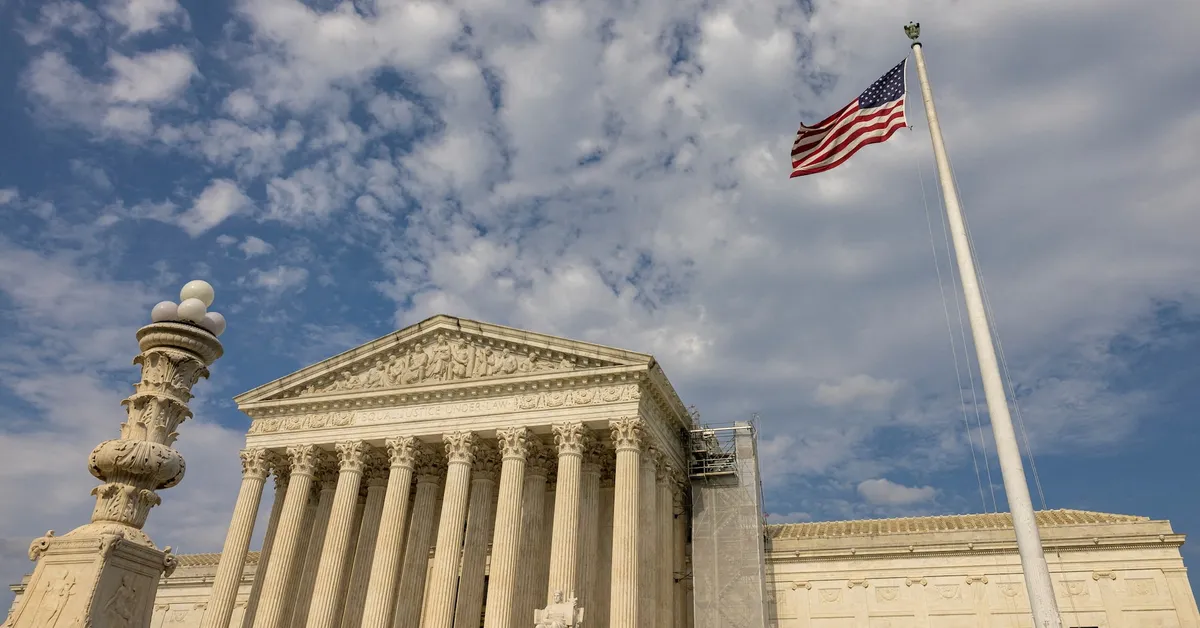
In a significant ruling on July 8, the U.S. Supreme Court granted President Donald Trump a substantial victory by allowing his administration to pursue extensive federal job cuts, potentially affecting hundreds of thousands of positions. This decision paves the way for the restructuring of several federal agencies, including the Departments of Agriculture, Commerce, Health and Human Services, State, Treasury, and Veterans Affairs, among others.
The Supreme Court's ruling lifted an earlier order from U.S. District Judge Susan Illston of San Francisco, which had blocked the planned mass federal layoffs, referred to as reductions in force, while litigation was ongoing. Following the court's decision, White House spokesperson Harrison Fields hailed the outcome as another decisive win for Trump, emphasizing that it reinforces the President's authority to implement efficiency measures throughout the federal government.
This ruling is part of a broader trend where the Supreme Court has sided with Trump in several urgent cases since his return to office in January. These include facilitating the implementation of his stringent immigration policies. Additionally, last week, Trump celebrated a significant legislative success with the passage of a major tax and spending cuts package by Congress.
In a brief, unsigned order, the Supreme Court indicated that Trump's administration was likely to succeed in arguing that both the executive order and accompanying memorandum that initiated the job cuts were lawful. Importantly, the court did not evaluate the legality of any specific layoff plans across federal agencies.
Justice Ketanji Brown Jackson, the only dissenting voice on the nine-member court, criticized the decision. She argued that Judge Illston’s temporary measure aimed at preserving the status quo was overshadowed by the court's eagerness to endorse actions by the Trump administration that she deemed legally questionable.
Back in February, Trump announced a significant overhaul of the federal bureaucracy through an executive order mandating agencies to prepare for a comprehensive government restructuring. The goal is to drastically reduce the federal workforce and eliminate programs considered unnecessary by his administration.
A coalition of unions, non-profits, and local governments that filed a lawsuit to challenge the administration's mass layoffs expressed concern following the Supreme Court ruling. They argued that the decision undermines democracy and jeopardizes critical services that American citizens depend on. The plaintiffs emphasized that reorganizing government functions and implementing widespread layoffs without congressional approval contradicts the U.S. Constitution, vowing to continue their legal battle on behalf of the communities they serve.
Judge Illston had previously ruled that Trump overstepped his authority in ordering government downsizing, stating that the president can only broadly restructure federal agencies when explicitly authorized by Congress. Her ruling represented a significant legal barrier against the proposed government overhaul led by Trump and the Department of Government Efficiency (DOGE), which has been instrumental in the administration's efforts to reduce the federal workforce.
Illston's decision temporarily halted mass layoffs and limited agencies' abilities to cut or restructure federal programs, ordering the reinstatement of laid-off workers, although implementation of this aspect was postponed pending appeal.
Don Moynihan, a public policy professor at the University of Michigan, commented on the implications of the Supreme Court's ruling, stating that it enables Trump to proceed with significant layoffs of federal employees without addressing the legality of those actions. Moynihan criticized the decision, noting that these are not minor workforce reductions and that Trump has made it clear he intends to downsize the federal government substantially. He warned that this could lead to severe and irreversible damage to public services.
According to an April Reuters/Ipsos poll, public sentiment on Trump's downsizing efforts is narrowly in his favor, with approximately 56% of Americans supporting the initiative, while 40% oppose it. The support is heavily skewed along party lines, with 89% of Republicans in favor compared to only 26% of Democrats.
The 9th U.S. Circuit Court of Appeals had previously rejected the administration's request to pause Judge Illston's ruling, prompting the Justice Department to file an emergency appeal with the Supreme Court. The Justice Department argued that the Constitution does not impose limitations on presidential control over agency staffing and that Trump does not require special permission from Congress to exercise his core Article II powers.
The plaintiffs warned that permitting the Trump administration to advance its rapid reorganization would result in the elimination of numerous federal programs, significant downsizing of agencies beyond what Congress had authorized, and the loss of critical government services, leading to the potential job loss of hundreds of thousands of federal employees.
In recent months, the Supreme Court has also allowed the Trump administration to continue deporting migrants without providing them the opportunity to demonstrate the risks they would face, along with ending temporary humanitarian protections for many migrants. Furthermore, the court has upheld Trump's ban on transgender individuals in the military and restricted federal judges' powers to impose nationwide rulings that could hinder presidential policies.